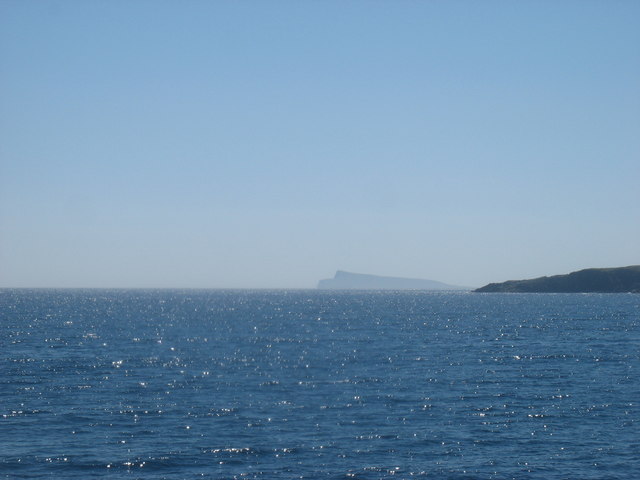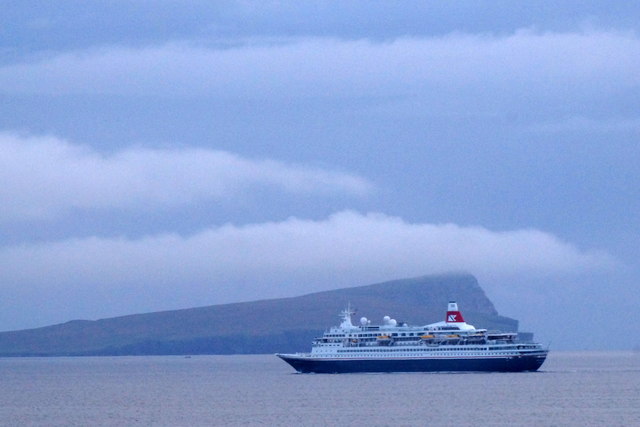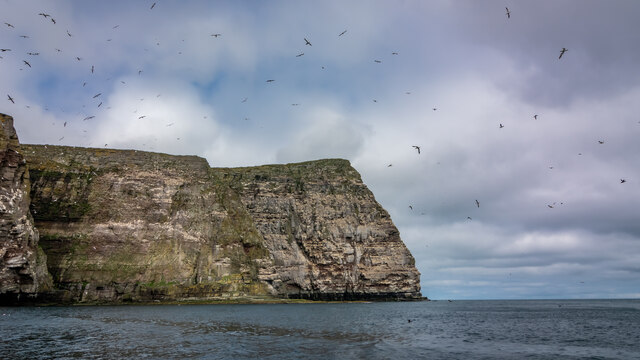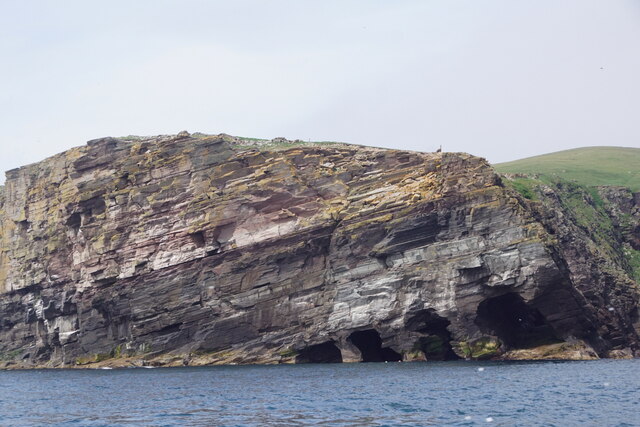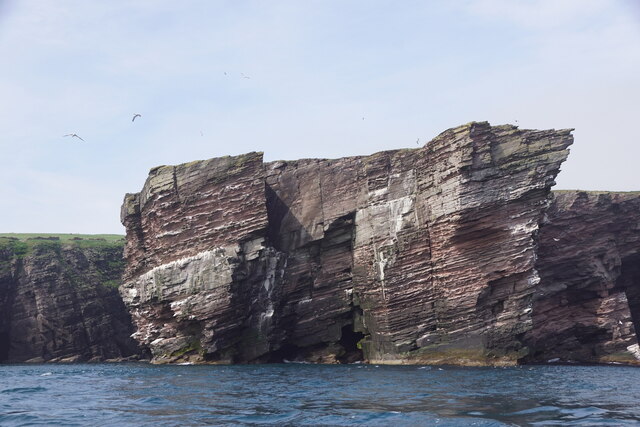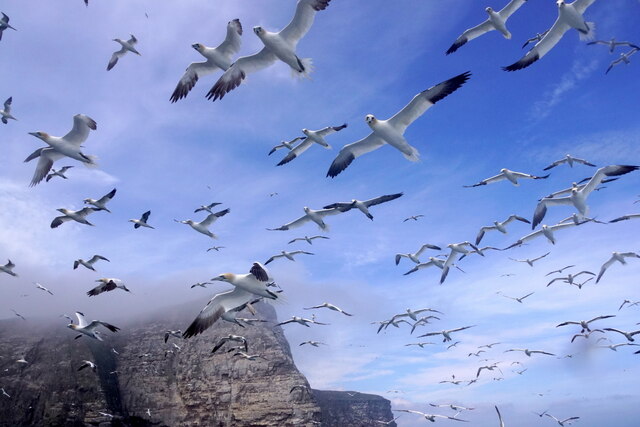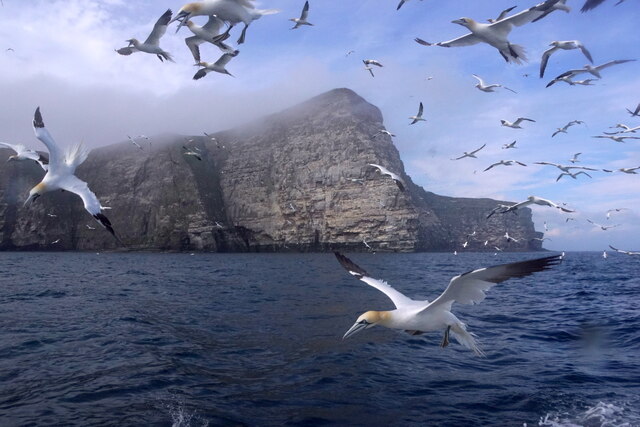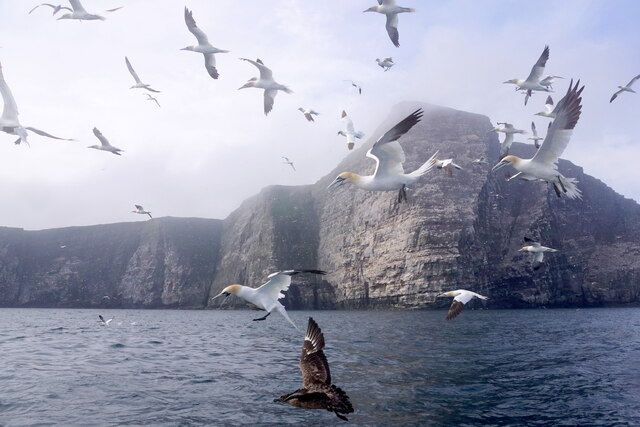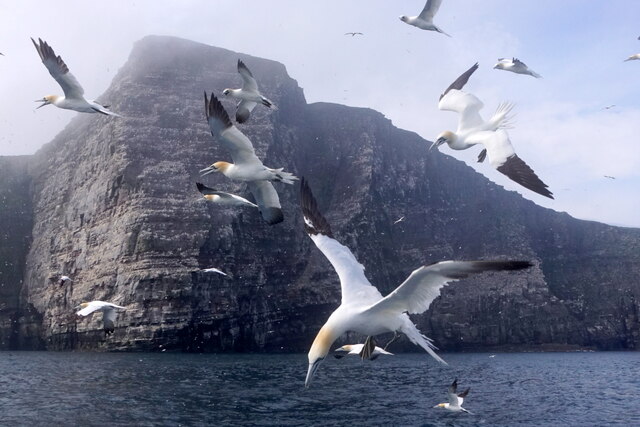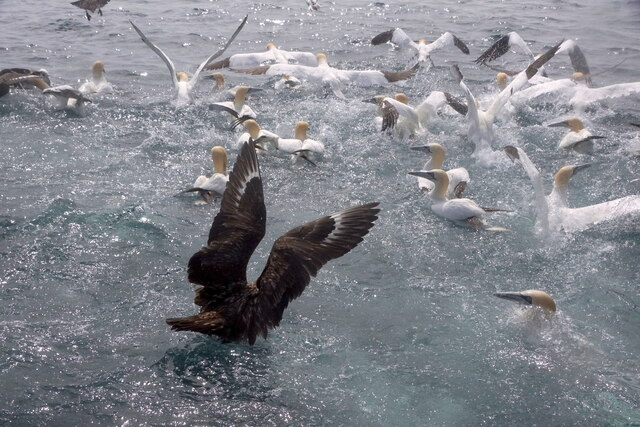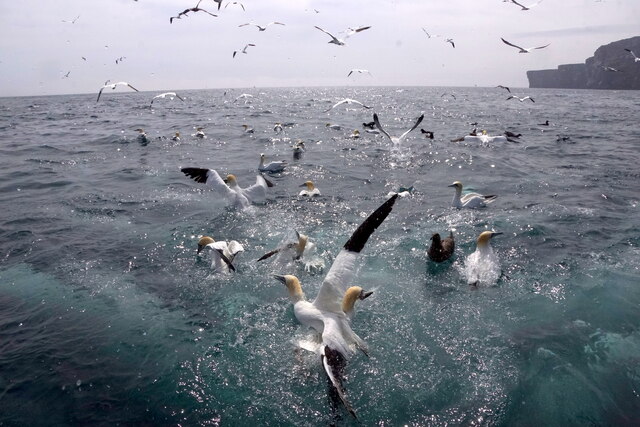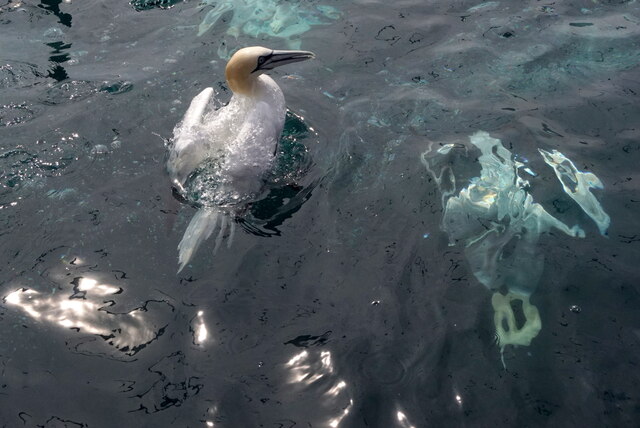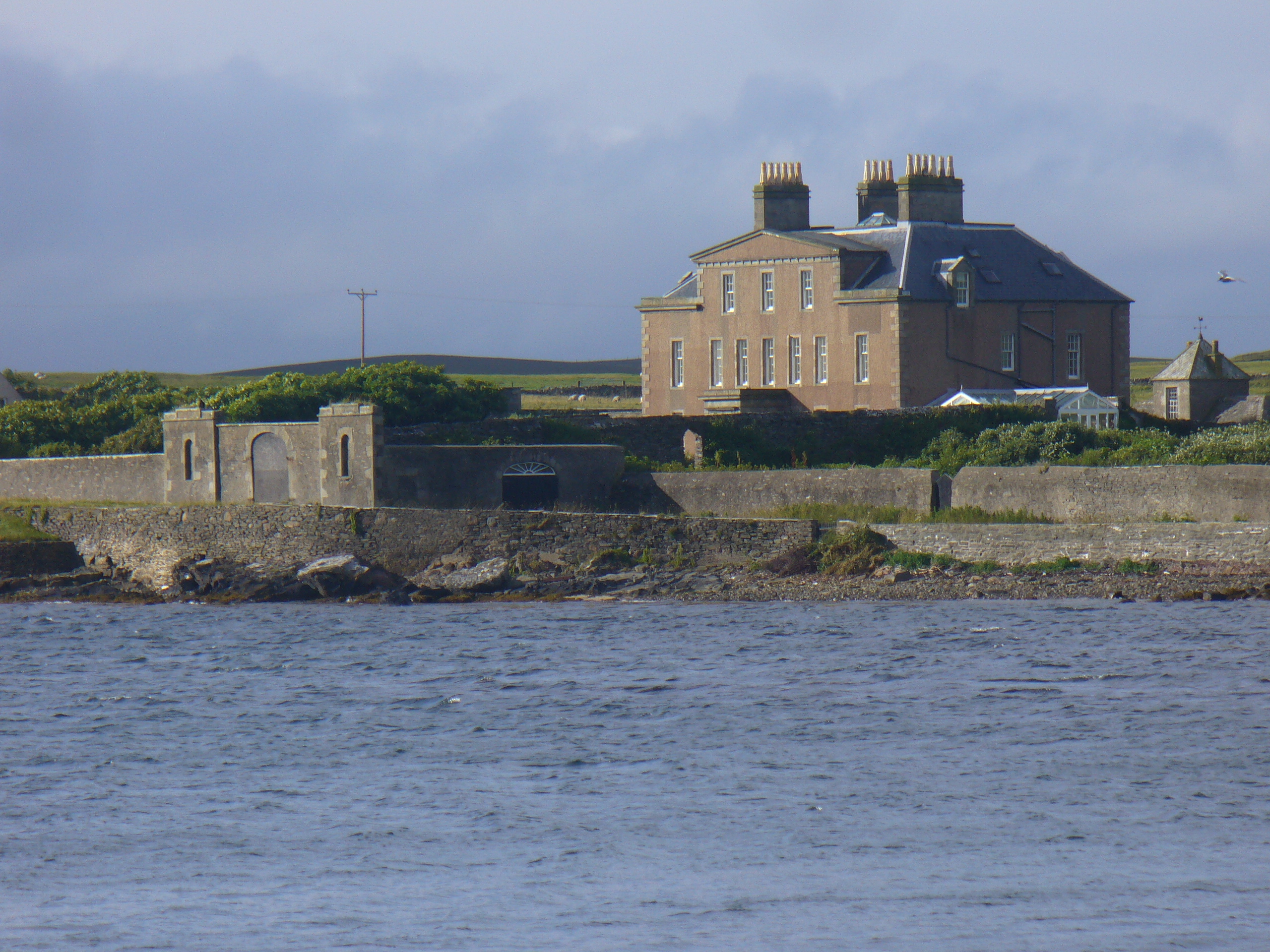Holm of Noss
Island in Shetland
Scotland
Holm of Noss
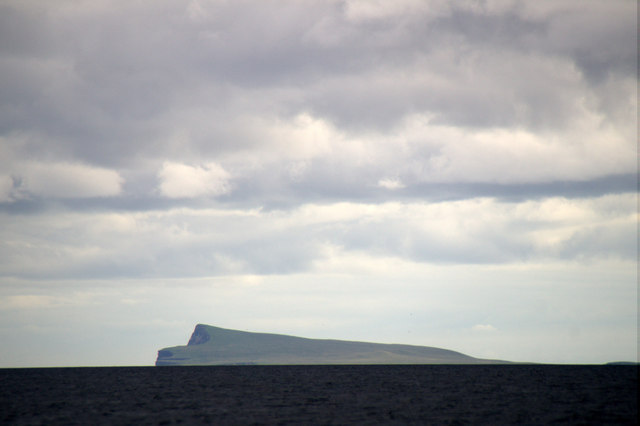
Holm of Noss is a small uninhabited island located in the Shetland archipelago, off the northeast coast of Scotland. It is situated about 200 meters east of the larger island of Noss, to which it is connected by a narrow isthmus. The island covers an area of approximately 26 hectares and is characterized by rugged coastal cliffs, rolling hills, and lush vegetation.
The landscape of Holm of Noss is dominated by steep cliffs that rise up to 60 meters above sea level, providing nesting sites for numerous seabird species. Puffins, guillemots, razorbills, and kittiwakes are among the most common birds found here, making the island a popular destination for birdwatchers and nature enthusiasts.
In addition to its diverse bird population, Holm of Noss also boasts rich marine life. The surrounding waters are home to seals, dolphins, and various species of fish, attracting snorkelers and divers to explore the underwater world.
Access to Holm of Noss is limited due to its protected status as part of the Noss National Nature Reserve. Visitors can reach the island by boat from nearby Lerwick, the capital of Shetland. However, it is important to note that landing on the island is prohibited to protect the fragile ecosystem and nesting bird colonies.
Overall, Holm of Noss offers a unique opportunity to experience the unspoiled beauty of a remote Scottish island, with its dramatic cliffs, diverse birdlife, and abundant marine wildlife.
If you have any feedback on the listing, please let us know in the comments section below.
Holm of Noss Images
Images are sourced within 2km of 60.132254/-1.0113112 or Grid Reference HU5539. Thanks to Geograph Open Source API. All images are credited.
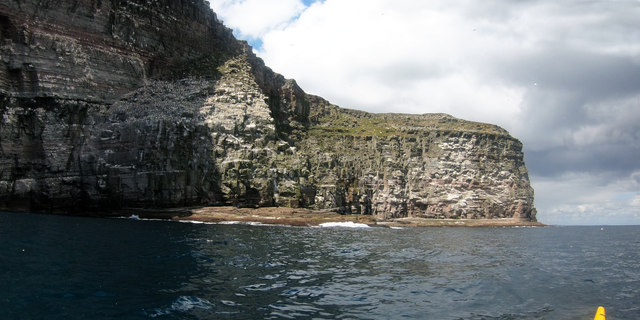
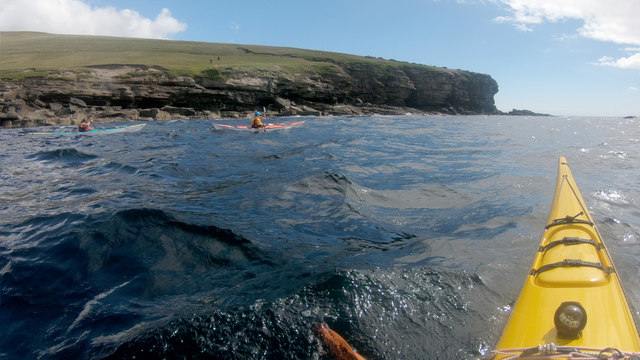
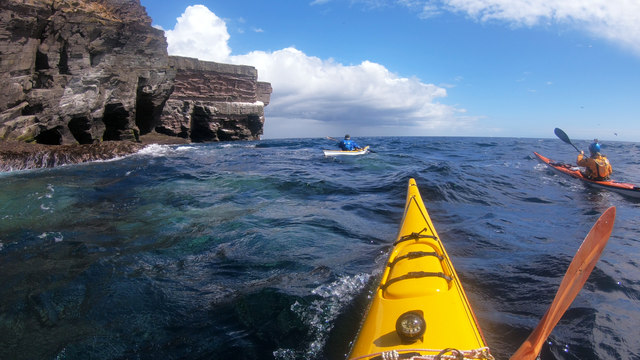

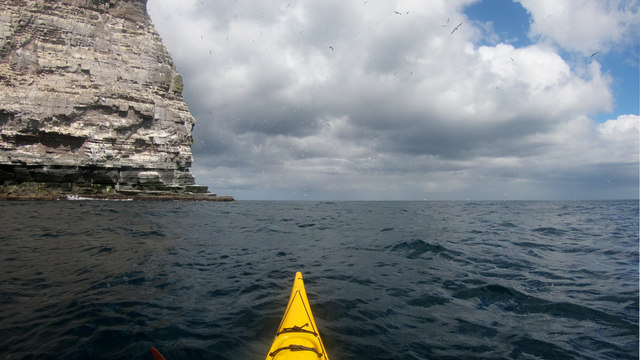
Holm of Noss is located at Grid Ref: HU5539 (Lat: 60.132254, Lng: -1.0113112)
Unitary Authority: Shetland Islands
Police Authority: Highlands and Islands
What 3 Words
///curated.caused.existence. Near Lerwick, Shetland Islands
Nearby Locations
Related Wikis
Holm of Noss
The Holm of Noss or Cradle Holm is an uninhabited islet of the Shetland Islands. It is about 48m at its highest point. == Geography and geology == It is...
Isle of Noss
The Isle of Noss or Noss (Scots: Noss) is a small, previously inhabited island in Shetland, Scotland. Noss is separated from the island of Bressay by the...
Broch of Cullingsburgh
The Broch of Cullingsburgh is an Iron Age broch located in the Shetland islands. == Location == Located on Bressay, off the east coast of mainland Shetland...
Bressay
Bressay (Scots: Bressa) is a populated island in the Shetland archipelago of Scotland. == Geography and geology == Bressay lies due south of Whalsay, west...
Bressay transmitting station
Bressay transmitting station is a broadcasting transmission facility for the Shetland Islands, located on the isle of Bressay, owned and operated by Arqiva...
Voe of Cullingsburgh
Voe of Cullingsburgh is a large sea loch off the Shetland island of Bressay, voe meaning "sea inlet" in Shetland dialect. The local spelling of the name...
Gardie House
Gardie House is an 18th-century estate house on Bressay in Shetland, Scotland. Located opposite Lerwick, across the Bressay Sound, Gardie is described...
Lerwick and Bressay Parish Church
Lerwick and Bressay Parish Church is the largest Church of Scotland congregation in Shetland, serving the islands' capital Lerwick and the surrounding...
Related Videos
Noss Head On Visit To East Coast Of Caithness North Highlands Of Scotland
Tour Scotland travel video clip, with Scottish music, of Noss Head, located above cliffs about three miles North East of Wick, ...
Gannets feeding off the Isle of Noss in Shetland 9 July 2021
After visiting the Gannet Colony on the Isle of Noss our Seabirds-and-Seals boat trip provided us with the great aerobatic ...
Gannet Colony at Noss in the Shetland Islands 9 July 2021
This afternoon's boat trip with Seabirds-and-Seals allowed us to view the incredible sight of the Gannet colony at the Isle of Noss ...
Have you been to Holm of Noss?
Leave your review of Holm of Noss below (or comments, questions and feedback).
